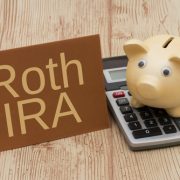Invest in Real Estate with your Self-Directed 401k
 Many people want to invest in real estate “if I could only find the cash for the down payment on a property or two.” But for many would be investors – the answer to getting started in direct real estate investment is right under their nose: You can use a Self-Directed 401k to invest in real estate.
Many people want to invest in real estate “if I could only find the cash for the down payment on a property or two.” But for many would be investors – the answer to getting started in direct real estate investment is right under their nose: You can use a Self-Directed 401k to invest in real estate.
Techniques
For Employees
If you don’t own your own company so you can become the sponsor of your own Self-Directed 401k plan, you have a couple of options:
Borrow. If your plan allows, you may be able to borrow up to $50,000 or 50% of your account value (whichever is less) to invest in real estate in a taxable account. If you go this route, understand you only have five years to repay the loan. Otherwise it’s considered a taxable distribution and if you are under age 59½, may generate penalties to boot.
Execute a Rollover. If it’s a 401k from an old employer, or if your plan allows in-service rollovers, you may consider rolling over some or all of your 401k balance to your own IRA. There you have a couple of options: You can pay income taxes on the rollover and start a Roth IRA (thereby gaining the advantage of tax-free growth forever in exchange for a near-term tax hit), or continue with the tax-deferred approach.
In this case, in a traditional IRA, your real estate investment will (hopefully) grow tax-deferred. Rental income is also tax-deferred – just reinvest it within your IRA until you are ready to take distributions. Required minimum distributions, of course, still apply starting April 1st of the year after the year in which you turn 70 ½. Distributions are taxable as ordinary income. Any gains attributable to money borrowed from outside the IRA may also be taxed under unrelated debt-financed income tax rules.
In the case of a Roth IRA, since you already paid income taxes on the money, growth and rental income are tax-free, as long as the money remains in the Roth at least five years. There are no RMDs to worry about either.
[tweetthis]Getting started in direct real estate investment: You can use a #SelfDirected401k to invest in real estate.[/tweetthis]
If you own a business
If you own your own business, setting up your own Self-Directed Solo 401k for the purposes of owning investment property may be a compelling option for several reasons:
- Unlike IRAs, 401k’s have no income qualification requirements. You can make a contribution to your own solo 401k, regardless of how high your income is. And if you have no other qualifying employees other than yourself and a spouse, there are no top-hat or discrimination rules to worry about, either. The solo 401k can be optimized for your benefit, to maximize the allowable contribution.
- You can still set up the account to allow for borrowing.
- Assets in a solo 401k enjoy substantial creditor protection
- You may be able to avoid unrelated debt-financed income tax by holding real estate within a 401k rather than an IRA. Speak with your tax advisor for more information.
- You can contribute much more to a solo 401k plan than you can to an IRA. While the IRA limits you to $5,500 in new contributions each year ($6,500 for those over 50), employees can contribute up to $18,000 in elective deferrals in a 401k. Meanwhile, the company can kick in between 20 and 25 percent of total compensation (up to a $265,000 compensation cap) on contributions. All told, you may be able to contribute up to $53,000 per year, tax-deferred, or tax-free if you choose to use a Roth option and contribute with after-tax money. ($59,000 if you are over 50, thanks to the effect of ‘catch-up contributions).
For more information, visit us online at www.americanira.com, or call us for a free consultation at 866-7500-IRA(472).



